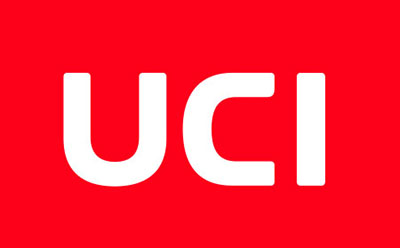
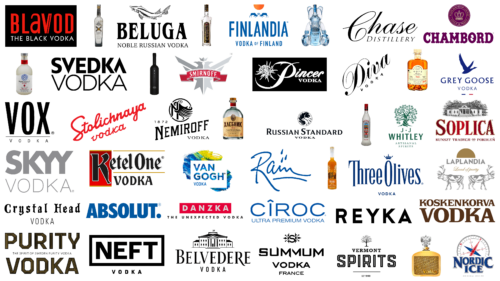 在世界上最畅销的烈酒中,伏特加位列第二,仅次于威士忌。不算私酒,每年有超过1.26亿箱被购买。就力量而言,她没有对手。例如,波兰品牌Wratislavia Spirytus含有96%的酒精。
在世界上最畅销的烈酒中,伏特加位列第二,仅次于威士忌。不算私酒,每年有超过1.26亿箱被购买。就力量而言,她没有对手。例如,波兰品牌Wratislavia Spirytus含有96%的酒精。
伏特加是什么?
简单来说,伏特加就是从食品原料中获得的稀释酒精。今天,伏特加在世界各地生产和消费,并被用于各种鸡尾酒和混合饮料中。由于其相对中性的味道和香味,伏特加也常用作调味品种和泡制的基础酒。然而,适量饮用伏特加很重要,因为过量饮用会对健康产生不利影响。
每个国家对饮料的基本成分都有自己的要求。在乌克兰,酒精是从谷物中蒸馏出来的。除了谷物,白俄罗斯也用土豆,而波兰和德国只用土豆。在其他欧盟国家和美国,任何蔬菜原料都是允许的。例如,在明尼苏达州,你可以尝试甜菜酒精。
原材料的选择影响口味:
小麦使饮料变得柔和,有面包和柑橘的余味。
大麦给人一种苹果味的饱腹感。
玉米——甜味和花香。
黑麦是辛辣的,有一点蔬菜的味道。
土豆增加了油性和泥土的味道。
对饮料浓度的要求也因原料而异。在独联体国家,这一比例为40-45%。这里有指标为50-56%的强化伏特加的概念。在欧盟,这个数字从37.5%开始,没有最终的限制。这使得Wratislavia Spirytus无法繁殖马铃薯和谷物原料。
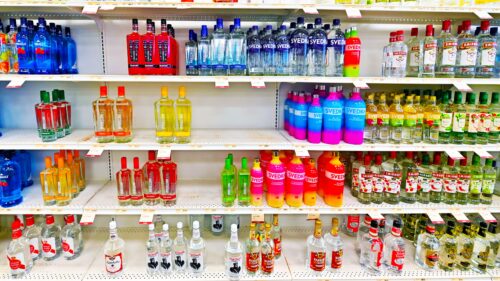
烹饪过程大致如下:
当纯酒精从杂质中分离出来时,发酵的酒基进行精馏或蒸馏。经过反复蒸发和冷凝,得到了浓度高达96%的产品。
酒精与预先准备好的水混合。
过滤所得的组合物。
加入调味酒(加入香草、胡椒、蜂蜜和黑麦面包)。
最后,完全完成的产品再次过滤并装瓶。
理想情况下,纯酒精和水混合时,会产生一种微甜的物质,喝起来很软。伏特加中余味、苦味和刺激性气味的存在取决于以下因素:
清洁的程度和方法。
添加调味酒精。
品味判断一个品牌的好坏。每个制造商都有获取酒精、净化水和水-酒精混合物的秘密。
酒精
精馏酒精有五种。它们都具有96.3%的浓度,但在甲醇、酯、游离酸和杂醇油的杂质数量上有所不同。杂质会损害味道,对健康有害。
最"污染"的是纯度最高的酒精。以此为基础,他们制造廉价伏特加。高级饮料是由勒克斯和阿尔法酒精制成的。第一种由谷物和土豆制成,第二种仅由谷物制成,并经过彻底清洗。阿尔法是最好品牌的一部分。在中等价位的类别中,产品由额外的酒精制成。
水
混合水是从天然水源或普通过滤水获得的。第二种叫做"纠正"或"特别准备"
第一种选择被添加到高级饮料中。山泉和井水的成分含有钙和镁盐,可以改善口感。有时伏特加中会加入特殊的水,比天然水要好。然后产品就变成超溢价了。例如,冰山伏特加是由酒精和融化的冰山制成的,而42以下是由新西兰开采的地球上最纯净的水制成的。
一些制造商从井里取水,通过石英砂过滤,获得尽可能纯净的液体。这也影响了产品的质量。
过滤
当酒精和水混合时,不健康的杂质再次形成。它们通过过滤被去除。沙过滤器、活性炭、用银、珍珠和牛奶加工——每个制造商选择他们的选项。
比如通过煤炭时形成少量乙醚,去除了刺鼻的酒精味。如果在煤颗粒表面加入少量的银,反应的活性就会增加。牛奶还会结合和沉淀不需要的杂质。
纯化程度越高,产品的味道越柔和。
总结:优质伏特加是由阿尔法和力士酒精制成的产品,用天然水稀释,最大限度过滤。
绝对(瑞典)

这种蒸馏酒名列前三,在120个国家销售。曾经,将这家国有制造商出售给保乐力加(保乐力加)使其有可能偿还该国的外债。第一种饮料出现在19世纪末,以连续多次蒸馏而闻名。
带有圆点的大号字母 logo表明了其丰富的品味和对竞争对手的优势。瓶子是装饰饮料的各种艺术附加物的基础。酒精香味的核心是干果和谷物,补充了自流水分。
亚美尼亚石榴(亚美尼亚)
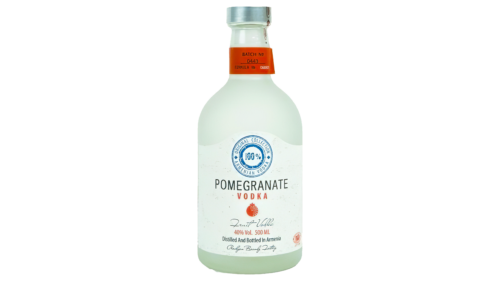
从亚美尼亚葡萄酒中亚美尼亚成分的外观和味道来看,很难立即理解它是葡萄酒还是伏特加。在生产勒克斯酒精的过程中,他们坚持使用石榴的果皮,这使得液体具有独特的颜色和味道。并且糖浆的添加甚至更多地改变了感官。这种伏特加被认为是一种水果。它很软,很甜,还有点酸。酒精几乎感觉不到,石榴的香气表达的很清楚。这种饮料的颜色是透明的,带有覆盆子色。石榴 logo强调了伏特加不同寻常的成分。
白鲸(俄罗斯)
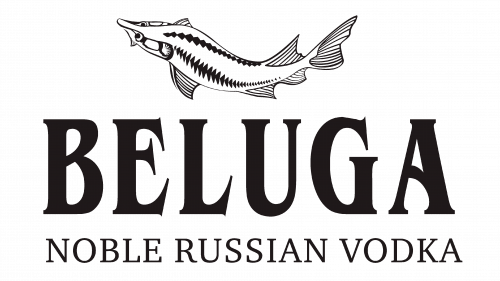
一行麦芽伏特加。酒精经过蒸馏后,与来自300米深的自流井的西伯利亚水混合。三个月的沉淀有助于形成强烈的结合和香味。沙和银过滤保证最大的安全性。加入蜂蜜和奶蓟有益健康,还能减少酒精的香气。
容器的设计和 logo与名字一脉相承——瓶子上有一条北海居民白鲸。
贝尔维迪尔(波兰)
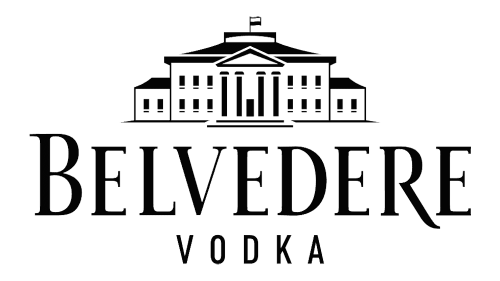
波兰黑麦饮料有一个尖锐的,结构化的味道。酒精经过蒸馏后,保留了谷物特有的味道。自流井水经过11次净化,是工业上使用的最纯净的水之一。该 logo显示了齐拉德乌市最古老的酿酒厂,自1993年以来,该品牌一直在这里包装。该品牌属于LouisVuittonMoetHennessy)家族的奢侈品牌,因此其品质和广告受到特别关注。
贝尔弗熊(波兰)
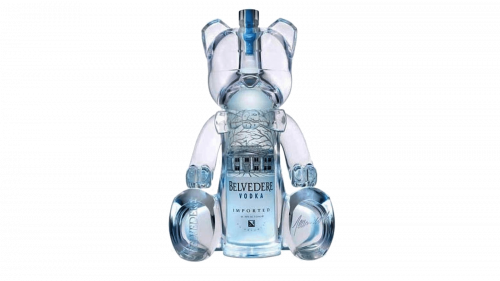
如果你有7000美元的闲钱,熊瓶是一个很好的礼物。这是一瓶蓝色照明的不寻常的精英酒的价格。它是专门为戛纳电影节的贵宾室打造的。所以,这里主要是随行人员。否则,精英酒精符合所有通常的标准。一个不错的好处是坚持柑橘类水果。
布拉沃德(英格兰)

第一款黑色伏特加在透明的同类产品中独一无二。出现在1996年。她的特色是黑色洋槐染料。味道是酒精,天鹅绒般的,辛辣的。带有红色题字的黑色 logo与不寻常的酒精形象完美契合。
香波堡(法国)
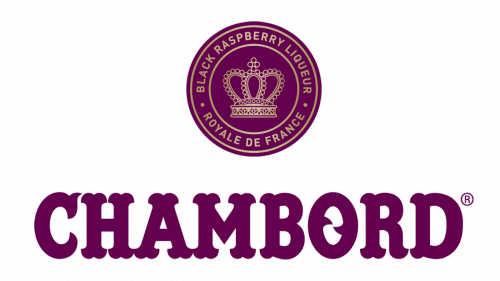
更著名的是那个名字的覆盆子和黑莓利口酒,是法国国王喝的。该公司的伏特加是基于黑莓和木槿的类似产品,只是强度更大。 logo是一个带皇冠的印章,证明了这种饮料的古老,值得帝王享用。
蔡斯(英国)

带有橙子味道的英国烈酒是节日餐桌的理想选择。要了解伏特加是如何制作的,请访问该品牌的网页,所有的制作过程都有现场演示。该品牌的 logo是新鲜的,现代的,优雅的,因为是创造一个形象的方法。
Ciroc(法国)
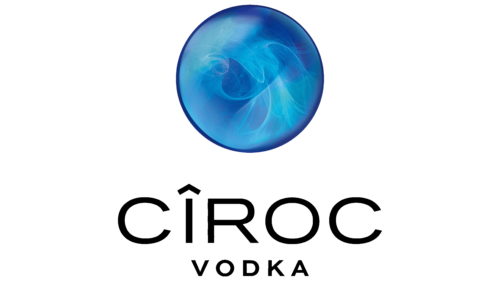
来自谢尔河畔科尔德斯村的法国葡萄的冷发酵为伏特加的生产创造了独特的基础。蒸馏用的铜小蒸馏器尽可能保留香气。精致的蓝色大字母 logo表明强烈的酒精葡萄花束。
克里斯塔尔(俄罗斯)
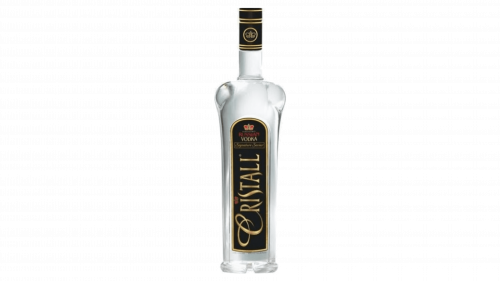
1987年,著名的莫斯科工厂斯托里克纳亚的研发地和莫斯科特供的装瓶地——被私人拥有,并被命名为水晶.这个日期可以被认为是该系列诞生的年份,该系列包括五种类型的饮料:水晶,纯水晶,水晶,莫斯科植物水晶高级和老莫斯科。在2016-18年,工厂和配方进行了彻底的更新。
旗舰饮料克里斯塔尔的味道很浓,相当尖锐。它被认为是伏特加的经典。谷物酒精没有添加剂,其特点是带有轻微苦味的谷物酒精风味100 . Alkosfot被添加到组合物中,这是一种含有乳果糖的添加剂,具有保护作用,可以降低宿醉的强度。
设计重点是俄罗斯帝国的皇冠。它被描绘在瓶盖、标签和 logo上,并在瓶子的变形顶部可见。 logo讲述了制造商的百年历史,它出现在尼古拉二世皇帝的时代。
水晶头(英国)

不可能无动于衷地路过一个骷髅形状的瓶子。而且这个 logo类似于斩首司空见惯的时代的铭文。然而,整个随行人员与一个非常微妙的食谱无关。加拿大酒精由发酵的甜玉米和当地的水组成。它经过蒸馏,以传统方式过滤,然后通过10,000颗半宝石,再通过一个额外的过滤器。原来这是一种带有奶油和轻微柑橘味的犹太酒精。
丹茨卡(丹麦)

发酵后,硬质小麦品种通过6个蒸馏柱进行斯堪的纳维亚蒸馏。制造商在很长一段时间里垄断了丹麦市场,所以它的产品是国家的脸面。丹兹卡的发展吸收了丹麦的所有特色和风味。用红色突出 logo是为了表明这种饮料是祖国的心脏。尽管它不再属于当地酿酒厂,但它仍然包含了丹麦最好的技术和生产秘密。
天后(苏格兰)
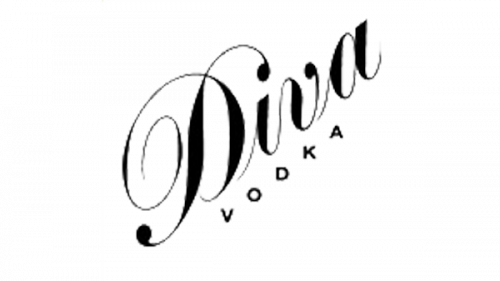
三重蒸馏苏格兰小麦饮料。主要亮点是通过沙子过滤碎宝石。人们认为这样的净化优于煤,并赋予饮料一种特殊的味道。为了引起人们对优质伏特加的注意,制造商在瓶中加入了一些珍贵的鹅卵石。这大大提高了饮料的价格,使设计的皇家。 logo上优雅的铭文强调了饮料的精致。
芬兰(芬兰)

这个自命不凡的名字体现了大多数芬兰伏特加的典型配方:六核大麦和冰川融水。因此,自20世纪70年代以来,口感的柔和与纯净一直备受重视。另一个惊喜是没有宿醉。鹿和红太阳也是北欧产品的常见 logo。
五(英国)
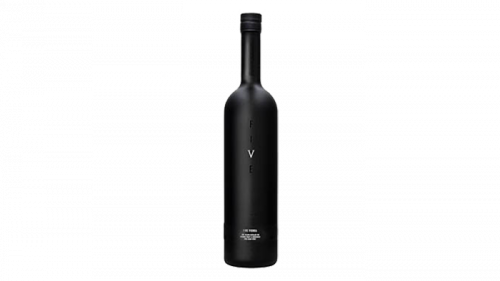
名称中的数字指的是潘德林立方体中蒸馏的次数,给出的强度为43%。其中一种成分是麦芽酒精,它为尖锐的黑麦余味增加了水果的甜味。该产品有一个简洁的设计——一个黑色的瓶子,上面有一个罗马数字5。
灰色红衣主教(立陶宛)
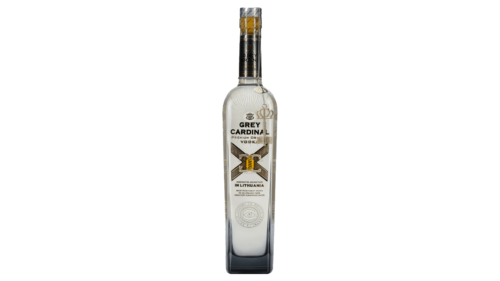
苦啤酒是在立陶宛一家1906年开业的工厂生产的。技术和原材料是从世界各地借来的。有机小麦在意大利种植,水从最纯净的欧洲水源中提取,包装在法国制造,亚麻过滤器在立陶宛开发。结果是一种非常平衡的饮料。 logo中带有皇家 logo的钥匙"打开"了伏特加获得普遍认可的大门。
灰鹅(法国)
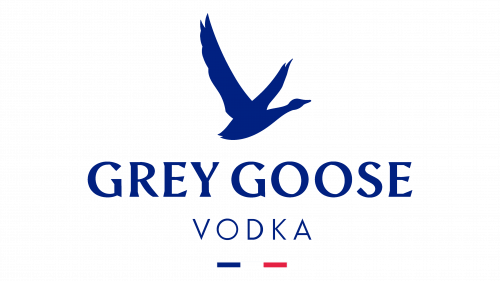
法国牌子是小麦做的,所以被认为是最好的之一。该系列包括经典和口味的柠檬,橙子,成熟的梨和巧克力坚果。总共有六个品种。主要产品是透明的和油性的,带有蛋白杏仁饼干的余味。
尽管在法国注册,但该品牌的创始人是一名美国土著。他特地来到科涅克省,为美国酿造最好的伏特加。该部门从高山上生产水,并种植各种谷物,这是生产烈性酒精的理想选择。
冬小麦的混合物被投入生产。该分类被蒸馏五次,并通过铜过滤器进行软化。最初的瓶子上有一只鹅的大图像,用真正的软木塞封闭,以保存饮料的所有味道。带有飞鸟的 logo; logo与品牌的风格一致。
1996年首次出现;一年后,灰鹅被公认为世界上最好的伏特加。因此,大型企业百加得收购了这个品牌。
赫莱布尼克(波兰)
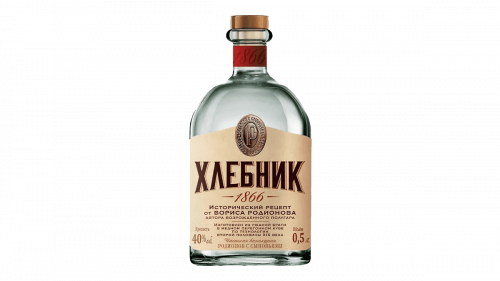
logo是一个带有大写字母P的盾形纹章,是这种饮料的发明者鲍里斯拉乔诺夫的商标,他在1866年发明了这种饮料的配方。酒精是在瓶子里生产的,瓶子的形状看起来像是用来储存药物和草药的旧药罐。这强调了产品的年龄。
该配方类似于波洛加斯的生产,polu gars是一种特殊的麦芽蒸馏物,是俄罗斯伏特加的祖先。在一个铜制的立方体中蒸馏三次,增加了酒精的感官容积。麦芽、椴树蜂蜜、面包和香料的味道令人回味悠长。
库尔伯格(爱沙尼亚)
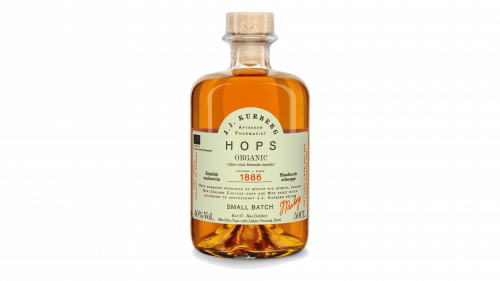
一种爱沙尼亚饮料干杯。明亮的黄橙色温暖宜人。它温暖并保证有浓郁的香味。19世纪末,一位药剂师发明了这种配方。这种药是用草药浸剂制成的,其中以啤酒花为主。因此,这种饮料可以镇静,改善睡眠,使情绪状态正常化。酒精被认为是有机的。
伏特加酒被命名是为了纪念这位发明家。库尔伯格购买的庄园仍在继续生产。但是用现代的方式现代化了,叫做我的。带有 logo的标签看起来像旧的药房处方。伏特加J.J .库尔伯格是限量生产的,所以每升成本高于平均水平。
姐姐(网络用语)法官裁判员(judges)惠特利工艺品公司(英国)

这种热饮值得密切关注,因为它是由醇制成的,而不是每个制造商都提供醇。这种饮料的另一个优点是18世纪的配方,是最古老的配方之一。小麦酒精中加入苹果浸剂。之后,产品在装瓶前静置。一棵苹果树盛开的浮雕瓶和 logo。深绿色给 logo带来了生命。
科特一号(荷兰)

酒精有一种不寻常的制备方式。小麦伏特加麦芽汁首先在一个柱子里蒸馏,然后一部分在特殊的19世纪的铜锅里蒸馏,这种饮料由此得名。将两部分混合,加热到40度,过滤,得到一种带有花香和轻微刺痛粘膜的组合物。荷兰杰作最初是为鸡尾酒开发的,但它以纯净的形式完美地饮用。 logo上的古老铭文表明了这种食谱的古老年代。
科斯肯科尔瓦(芬兰)

泉水大麦蒸馏酒是以阿尔蒂亚集团生产它的城市命名的。就芬兰伏特加的受欢迎程度而言,仅次于芬兰排名第二。一升要一万八千粒,250级增劲。应该注意到循环的封闭性和最大限度的自给自足。该公司拥有田地、泵站和大麦外壳,它们被燃烧以产生内部过程所需的能量。自命不凡的 logo是在一个不寻常的字体,展示了饮料的创意。
克罗勒斯卡(波兰)

该品牌于1994年在波尔莫斯酒厂首次亮相。该产品是基于从美国最干净的地区收集的黑麦谷物中提取的豪华酒精。麦芽汁经过三次蒸馏。这就产生了一种不同于普通黑麦产品的更柔和的,几乎像奶油一样的味道。
一个优雅细长的瓶子,有一个延伸的底座,一个鲜红色的塞子和一个标签,使设计优雅和高贵,正如它的名字所暗示的
ts. The label depicts a very ancient St. Mary’s Church located in Krakow. This stunning place of truly royal beauty has absorbed the city’s spirit. Laplandia (Finland)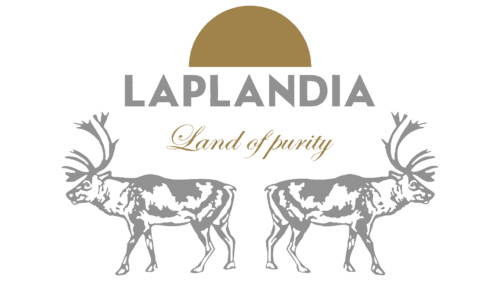
Real northern vodka is not just premium but super-premium class. The reindeer and the golden sun on the logo confirm this assessment. The idea for creation was the purity and virginity of Finnish nature. It contains water from a lake that undergoes natural purification through layers of thousand-year-old sands. Alcohol is obtained from wheat grown by organic family farms. The wort goes through a sevenfold rectification cycle. After mixing, the drink is infused for a month and filtered with cartridge filters.
Moses Date (Finland)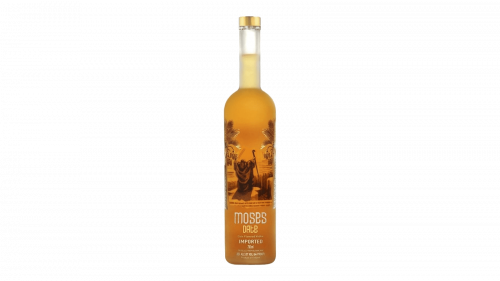
The frosted bottle with the image of Moses praying, before which the waters of the Nile parted, makes the brand a work of art. The plot’s choice signals the Jews about the kosher nature of the product, which was developed for the celebration of Passover. Jewish holiday for the Israelites to leave Egypt.
The strength of alcohol is lower than usual – 32%, and it contains not only ethyl alcohol from wheat but also cane sugar. The latter gives the composition a date flavor.
Neft (Austria)
Looking at the design of the distillate, you immediately understand that this is an unusual drink. The alcohol is poured into miniature oil barrels painted black with a similar logo. This gives the entourage of the feast, in the barrel, crystal clear grain vodka with an aftertaste of meadow herbs and bitter almonds. The liquid undergoes rectification within 50 hours, which is reflected in the shades’ versatility. The line also includes red and white oil with the appropriate packaging design.
Nemiroff (Ukraine)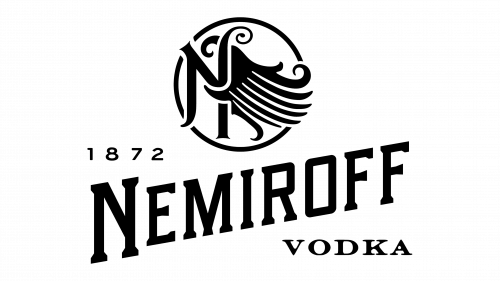
Ukrainian honey-cumin vodka, known on five continents, has been produced for over 150 years in the city of the same name. Her modern recipe was introduced in 1997 and 10 years later recognized as one of the best in the world. In the line, there are varieties of vodka, where honey with herbs or with pepper. The alcohol is filtered through birch charcoal. The unusual design of the embossed bottle and the logo in the form of a wing indicate the originality, lightness of the drink, and the mild taste characteristic of products with honey.
Nordic (Finland)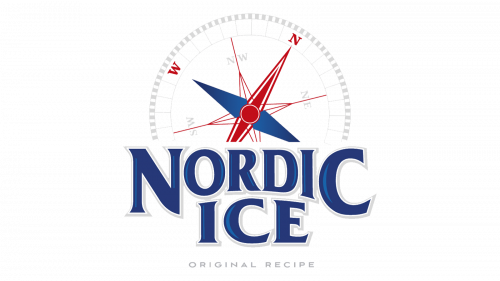
The bottle’s design with snowflakes and snow landscapes indicates the drink’s production in Finland’s cold lands. It complements the impression of a logo with a compass and the signature “Northern Cold.”
The distillation is based on barley alcohol from six-core grain varieties. Long-term rectification gives up to 200 cleanings. Water is taken from a glacial spring in a remote Finnish village. The drink gets a very light barley flavor with a hint of licorice.
Pincer Shanghai Strength (Scotland)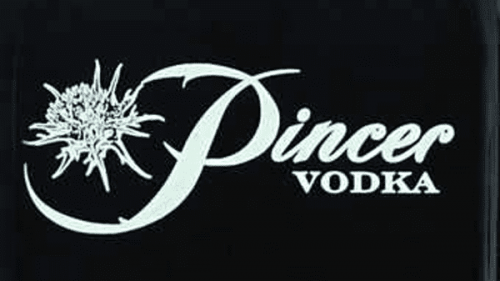
The strongest drink at almost 89 degrees. The Scots produce it for the Chinese market. Of course, you can not drink it undiluted. The black design of the logo is just about this, and the pattern with dried thistle indicates the use of the plant extract in the composition.
Purity (Sweden)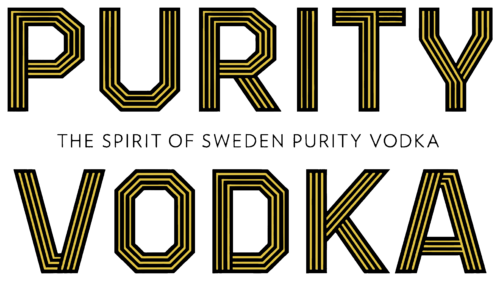
Since its introduction in 2007, the drink has received more than 200 awards. What is so special about PURITY vodka? First, organic. Alcohol is produced from raw materials grown without the use of chemicals. Secondly, distillation on special equipment makes the taste of the product special.
The Swedish blend master Thomas Kuuttanen worked on the development of the technology. He founded a distillery based on an old castle near a healing spring and took water for production from its artesian wells.
Wheat-barley alcohol is distilled in copper and gold distillation columns up to 51 times. The process is slow and takes up to 3 days, forming a rich aftertaste. The logo of multi-layered letters speaks about this process. After mixing alcohol with water, the sorting is not filtered since both components are pure. The final mixture is slightly viscous and sweetish.
The brand offers three products with different degrees of distillation. It is recommended to use diluted with pure water and with the addition of zest or juices.
Rain (USA)
The unique shape of the teardrop bottle immediately draws attention to the American product. The logo with drops and water inscription completes the impression of crystal clearness and transparency.
The corn base, characteristic of strong drinks in the United States, is present in RAIN vodka. Alcohol passes sevenfold distillation, which eliminates the taste of alcohol as much as possible. The sorting is filtered with coal dust and diamonds, achieving perfect purity.
Reyka (Iceland)
The distillery that produces vodka belongs to the well-known producer of Scotch whiskey – William Grant. The company’s products are always unusual, and REYKA is one of them.
A rich, versatile taste with smoky notes of anise flavor from tarragon characterizes the Icelandic product. The name fits perfectly. REYKA means smoke. Water for the product is extracted near an active volcano. Hence, the smoke from the hot springs’ evaporation, the smell of smokiness, and the constant hanging in the air not far from the distillery. Water, filtered through lava, acquires a useful composition and is purified.
Alcohol is made from Scottish barley and wheat grains. Distillation takes place in a copper apparatus of a special design. This is followed by filtration through crushed lava. After mixing with water, vodka is bottled. The result is unique alcohol, and gastronomic tourists do not pass by without tasting it.
The drink’s logo is simple and clean, as are the ingredients.
Russian Standard (Russia)
Water from the sources of Lake Ladoga and winter wheat put the drink on par with most premium alcohol. And four filtrations and 2nd purification through carbon filters guarantee ease of use. The line has four varieties: Original, Gold, Platinum, and Empire. The latter is the most luxurious, with 8x distillation. The bear and the eagle on the logo are the symbols of Russia, known worldwide.
Russo-Baltique (Russia)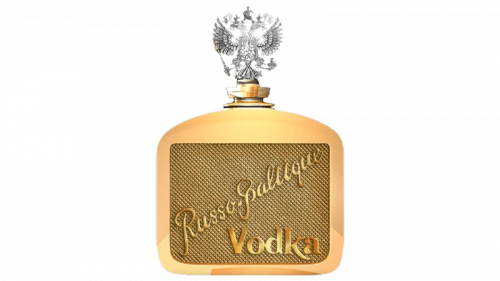
The most expensive brand, the gift with which comes a machine, and the vessel are made of bulletproof glass with a yellow and white gold finish. The machine medallion logo completes the image.
SKYY (USA)
In America, this brand ranks first in sales and in the world – fifth. Unlike the usual US corn vodkas, SKYY is made from wheat, which is why its taste stands out so much. The classic composition passes four times distillation and three times filtration. The water from the bay gives the alcohol an American flavor. The drink bottle is as blue as the sky, and the name and logo are like clouds floating in it.
Smirnoff (England)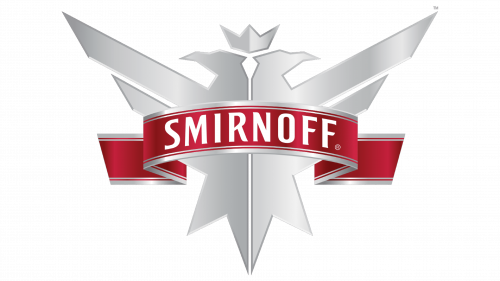
Raw materials for producing the best vodka in the world are purchased in Scotland, and birch coals are used to filter it. The beginning of the recipe goes back to the dawn of the 19th century when the Smirnov family owned the factory. It is to them that the world owes the appearance of a masterpiece. Russia lost the rights to the recipe due to the revolution when Smirnov left the country and sold his secret abroad. Now the brand is owned by the Diageo concern. And only the logo remained from the historical past. The double-headed eagle, as if carved from ice and silver and crowned with a victorious red ribbon, testifies to the greatness and celebrity of the drink.
Soplica (Poland)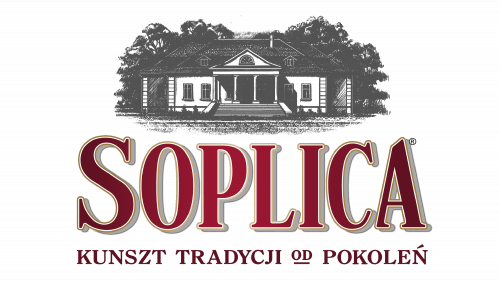
Polish organic vodka has been made at the Gniezno factory since 1888. Its name is taken from a poetic work and is the protagonist’s surname. The founder, Pan Kasprowicz, tried to put the Polish spirit and history into the drinks of the line. The logo has an old manor and a signature about preserving the traditions of generations. The bottles are specially embossed as protection against fakes.
The classic version of 40% is prepared on cereal alcohol. The rest of the drinks in the line come with additives on fruits and herbs and are more reminiscent of tinctures and liqueurs with a degree of 28. Molasses and alcohol juices are introduced into their rectification. The full recipe is kept secret.
Stolichnaya (Russia)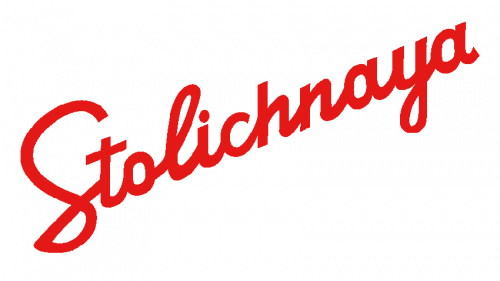
There is a serious struggle for the right to own the Stolichnaya trademark because this is the most famous brand of Russian drink abroad, the history of which dates back to the times of the USSR. Now vodka is produced at a private factory Crystal. The label is decorated with gilding, adding elitism to alcohol, and the logo rising up indicates the quality improves every year. According to the recipe, Lux alcohol is filtered with coal and quartz sand. The final version contains refined sugar, which removes the harsh taste of alcohol.
Summum (France)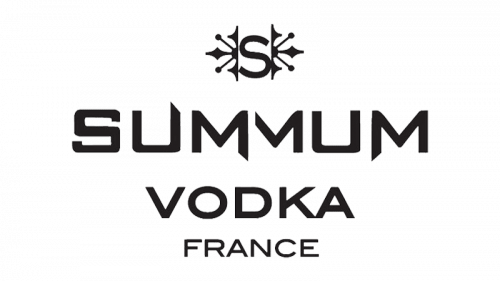
The province of Cognac in France turned out to be ideal not only for producing the drink of the same name but also for a whole range of premium alcohol. The name of vodka, translated as “top,” speaks for itself – the drink is one of the best on the market. Rectified wheat alcohol is mixed very slowly with two-week breaks with water from a clean source. The process makes the drink airy and silky with vanilla and wheat flavors. There is bitterness in the aftertaste, like most strong grain varieties.
In addition to the classic, there is lemon vodka and pepper in the brand’s arsenal. The logo exudes sharpness, coolness, and crystal clearness.
Svedka (Sweden)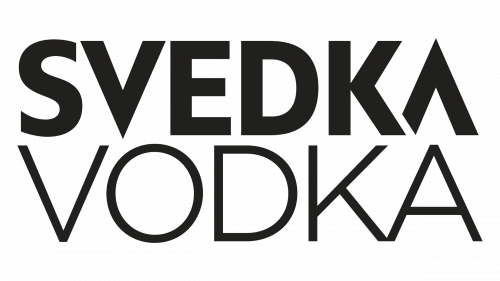
The taste of this vodka contains notes of the softest grain alcohol, ocean breeze, and sweet citrus fruits. The raw materials for creating a masterpiece of the master took in the south of Sweden and subjected to five distillations. The largest consumer of the brand is the United States, where it is valued for its pleasant flavor bouquet. The large logo is designed to highlight the drink on the counter, like a truly Swedish one.
Three Olives (England)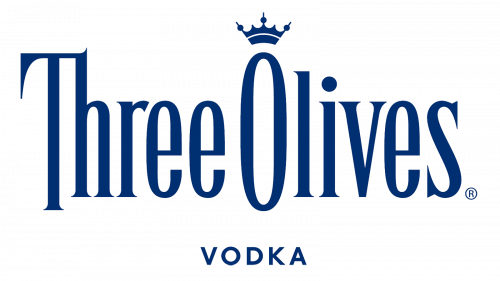
Vodka appeared in 1998 in London. The logo with a crown immediately shows the country of production and the excellent taste of alcohol. A drink made from winter wheat undergoes a four-fold distillation, softening the taste and adding mineral shades. Water for production comes from Lake Wales. The line for cocktails has flavored options with a strength of 35%.
Vermont Spirits White (USA)
This brand of vodka embodies the spirit of Vermont. It is handcrafted from state-sourced Vermont maples. Maple must is used for vodka, which is already unusual among the prevailing grain spirits. Distillation units for distillation are made to order. The tree logo is recognizable and memorable. He points to an unusual raw material.
Vincent (Holland)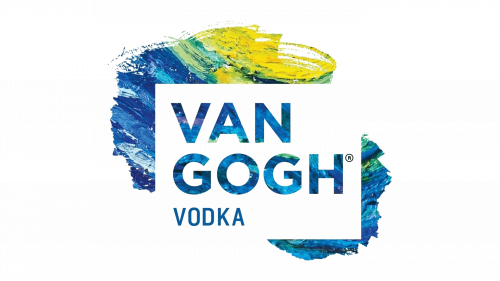
The vodka is named after a famous artist. Its brushstroke logo is reminiscent of the Starry Night element. It is based on a blend of the best wheat spirits from France, Germany, and Holland. On the palate, notes of wheat with a mineral aftertaste.
The collection includes a classic version of the drink and a range of products with fruit flavors (apple, berries, orange, pineapple) for various experiences. Products are the basis of all kinds of cocktails.
Vox (Holland)
The drink is prepared at the old distillery, which opened in 1828. Vodka from the Netherlands is distilled five times to obtain a mild taste. The logo’s tall, elongated letters indicate the container’s shape and the production of alcohol from the best ingredients. A mixture of wheat alcohol and pure water is considered a classic for vodka products, so the bread taste and a slight bitterness will pleasure connoisseurs of a natural drink.
Benefits of Vodka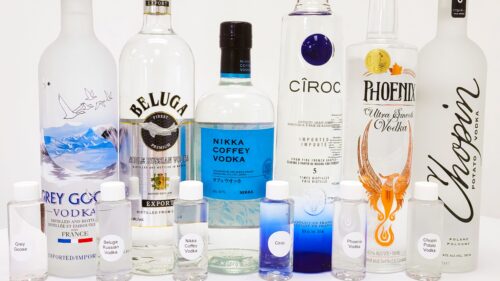
Drinking alcohol in small amounts is beneficial for health due to the properties of alcohol and raw materials.
AntisepticAs an antiseptic, vodka acts only externally. She can treat wounds. This will get rid of the infection and cause the death of microbes. When taken internally, the drink does not affect viruses and bacteria directly. However, a small amount, especially together with pepper, increases the activity of leukocytes, lymphocytes, and sweating. This speeds up recovery. For colds, ear pain, and inflammation of the joints, alcohol is suitable for rubbing or compressing, helping due to the warming effect.
PainkillerEthyl alcohol is similar in the mechanism of action to endorphins – substances that cause pleasure. Mood and tone rise, as does the threshold of sensitivity. Because of this, even serious injuries do not cause acute pain.
Soothing, relieving stress, and improving sleepSmall doses of alcohol have the same mechanism of action as antidepressants. Ethyl interacts with neurotransmitter receptors, causing relaxation and stress relief.
Circulatory stimulatorThe activation of blood movement occurs due to the improvement of the heartbeat, the expansion of capillaries, and the thinning of the blood. That is why a person in the cold warms up after a glass of alcohol.
Appetite regulatorEthyl alcohol activates the brain neurons responsible for appetite and promotes good digestion of food. Therefore, it is ideal for drinking alcohol during plentiful feasts.
It should be noted that alcohol has the listed positive properties when consumed in small quantities. Frequent and excessive drinking can backfire and become addictive.
Some statistics The best-selling vodka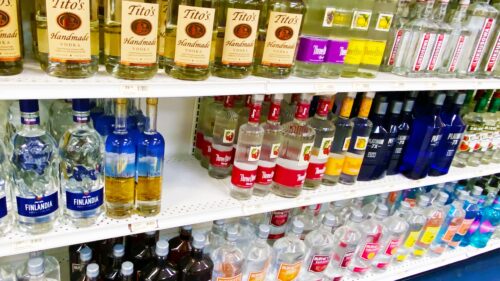
According to the WHO, which collects statistics for all countries of the world, the most ethyl alcohol per capita is in Moldova and Lithuania (15 liters per year), followed by European countries. They drink the least in Africa and the Muslim world. For a year here, a person consumes from 0 to 2 liters of alcohol.
The two largest vodka markets are consistently located in Russia and the USA. But by 2022, Poland has become the largest producer of spirits. Her innovation in terms of improving the taste and adding herbal notes to the drink has led to the great popularity of the country’s brands. The market will change even more in the future as the world’s leading alcohol producer Diageo leaves Russia. Namely, he produces the world’s most popular and best-selling vodka, Smirnoff.
More than 25 million cases of Smirnoff leave the shelves every year, which is significantly superior to other competitors. Sweden’s Absolut, which is in second place, sells just over 11 million cases. Also in the top four are Khortytsya and Polish Zubowka.
It is interesting that if the volume of sales of other types of alcohol fluctuates, then vodka has its stable consumer. For example, in Russia, it is chosen by 17% of alcohol buyers, and this figure is not affected by any cataclysms.
The cheapest vodkaThe cheapest vodka of the popular Smirnoff can be bought in Lebanon, followed by Latin America and Africa. The cost of 0.7 liters of drink will be 2-4 dollars. In the US, the price is almost $10, while in Ukraine, this figure is $12. Of course, there are enough little-known manufacturers in the post-Soviet space whose products can be purchased much cheaper. But it is difficult to judge the quality of this alcohol.
The most expensive vodka in the worldSince vodka is made from alcohol and water, making it very expensive is difficult. Therefore, manufacturers add value through additional materials, specially decorated packaging, and surprises that come with the kit. Like an SUV!
Russo-Baltique vodka is sold for 1.3 million through a bottle of bulletproof glass, a gold monogram smelted from old coins (the same adorned the brand’s real cars of the early 20th century), and corks made of ordinary and white gold. But the main addition to the drink is the Dartz Prombron SUV.
The most expensive is the Scottish brand Diva. Its contents are filtered through precious stones crushed to sand. And a stack of small pebbles is placed inside the bottle. Here the amount of payment depends on their price and quantity. The minimum option is $ 3,700; the maximum is more than 1 million.
However, this is not the limit. In 2015, buyers were offered the Billionaire brand worth 7.2 million for 18 liters. It was not only filtered through diamonds but the bottle was also decorated with diamonds in gold.
The Hong Kong “Dragon’s Eye” is slightly behind it. A container with a glass bas-relief of the beast, studded with precious stones, adds $5.5 million to the cost.
The most unusual vodka Flavored vodka Chombord delights with pink color and aroma of hibiscus with blackberry, but without sweetness. However, in the list of “unusual,” it is inferior to O2 vodka soda, which is poured from a siphon. The drink is great to drink and even good for health. Vodka “Chinggis Khan” doesn’t seem strong at all, like drinking regular milk. This is milk obtained by distilling a fermented goat product. And it’s 38 degrees. FAQ What is the difference between good vodka and “bad” vodka?Good vodka differs from bad vodka in the presence of harmful impurities. Fusel oils and methanol are poisons. There are many of them in unrectified alcohol; therefore, such raw materials are prohibited for vodka production. However, some manufacturers falsify the drink by introducing poorly purified alcohol into its composition. This leads to poisoning, severe hangovers, and the drink’s sharp, unpleasant taste.
The ingredients of good vodka: what to pay attention to?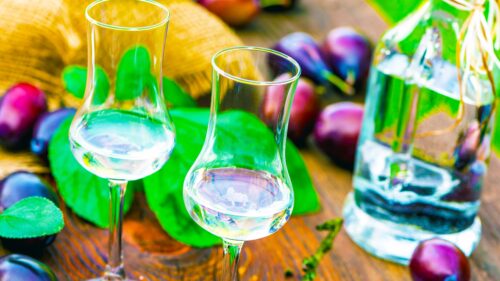
To understand how good vodka is in front of you, it is important to be able to read labels. On the bottle, the ingredients are placed in descending order of concentration. Therefore, in the first place is water (55-62.5%), then ethanol, preferably with an indication of the class, then the rest of the additives. Of these, flavored alcohol is acceptable.
A quality drink should not contain soda (bicarbonate) and glycerin. These elements are not harmful to health but often soften the taste of poorly filtered alcohol.
Flavors and dyes should also raise questions. Quality vodka is clear, even with additives. In special vodkas, aromatization is permissible only due to aromatic alcohols, but they are also transparent as they are distilled. Dyes are needed only for tinctures since, over time; alcohol discolors the color of the base.
To improve the taste, citric acid or sugar is added to the composition. These are also undesirable additives since, during storage, they cause the formation of harmful substances. It is better if ascorbic acid (vitamin C) or honey is used for organoleptic purposes. They have the same effect but without subsequent troubles.
How to choose a quality vodka: what to pay attention to?
On the shelves of stores, there is a huge selection of vodka products. How to choose an original product and avoid counterfeit and unscrupulous manufacturers?
Buy the product from a specialty store or, at the very least, in the supermarket. They don’t sell alcohol without a license. The hard liquor store is nice to have a consultant to help. Make sure that there is an excise stamp with holographic elements and stripes of various types and that the heat-shrink cap fits snugly on the neck. Look at the label and bottle. A simple shape and a thin paper label stuck on it somehow is not the best choice. Standing brands always care about the product’s appearance, adding embossing or embossing. Intricate containers are harder to fake. The label is made on thick paper, readable, sometimes with metal threads and drawings. Examine the contents. Flip the bottle, and face the light. Any inclusions, flakes, or texture heterogeneity should be alert. Read the composition.It is better to give preference to products of well-known brands, as they care more about the methods of protecting the goods and the quality of the content.
How to serve vodka?Before the feast, the drink is left to lie down in the freezer. Chilled vodka is easy to drink. Low temperature removes odor and taste. If the brand and composition are good, but you don’t like the taste at all, you can add honey or horseradish to the drink and let it brew. The ingredients will soften the alcohol.
Drink vodka with snacks. Meat, sausage, pickles, and smoked fish are ideal.
The signs of premium vodka? Carefully crafted design. A good brand has a recognizable style. As part of alcohol Alpha or Lux, blended or spring water from specialized sources, several degrees of purification. The price is above average, as a worthwhile product requires costs.
本文关键词:44个世界上最好的伏特加品牌44个世界上最好的伏特加品牌The 44 World’s Best Vodka Brands

总监微信咨询 舒先生

业务咨询 付小姐

业务咨询 张小姐